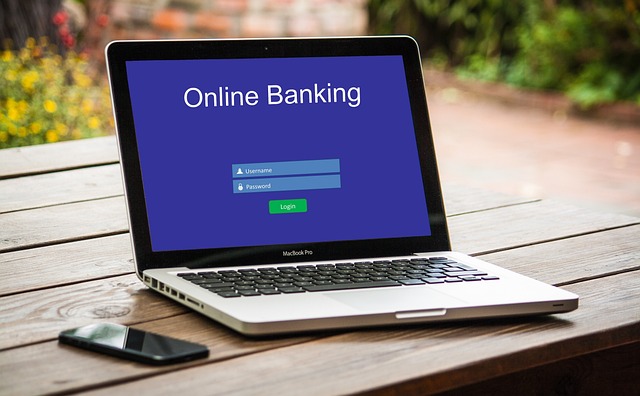In finance, understanding loan amounts is key for both traditional and alternative paths. Banks offer fixed loans with strict criteria, while alternative sources like online lenders and fintech provide flexible, tailored amounts using non-traditional data. Loan limits vary greatly based on factors like credit history, income, debt-to-income ratio, and loan type (secured vs unsecured). Alternative financing models like peer-to-peer lending and crowdfunding have unique size restrictions. Online lenders in the digital age offer innovative, flexible structures, connecting borrowers directly with investors to eliminate intermediaries and provide lower rates. Assessing financial needs and goals is crucial for finding personalized, suitable loan packages without exceeding capabilities.
In today’s financial landscape, understanding loan amounts is crucial whether opting for traditional or alternative financing. This comprehensive guide delves into the factors influencing loan limits, from bank-offered sizes and types to the diverse structures of online lenders. We explore how to determine the suitable loan amount tailored to your needs, highlighting the benefits of considering alternative financing options. By the end, you’ll be equipped with insights to navigate the process confidently.
- Understanding Loan Amounts: Traditional vs. Alternative Financing
- Factors Influencing Loan Limits: A Comprehensive Look
- Bank-Offered Loan Sizes and Types
- Exploring Online Lenders: Their Loan Structures and Benefits
- How to Determine Suitable Loan Amount for Your Needs
Understanding Loan Amounts: Traditional vs. Alternative Financing

In the realm of finance, understanding loan amounts is key to navigating both traditional and alternative financing options. Traditional lenders like banks often offer fixed-sum loans with predetermined approval thresholds based on strict creditworthiness criteria. This method, while reliable, can limit access for those with less-than-perfect credit histories or unusual financial circumstances.
In contrast, alternative financing sources have emerged to cater to a broader range of borrowers. Online lenders and fintech companies now provide flexible loan amounts tailored to individual needs, often using non-traditional data points for assessment. This shift towards alternative financing has democratized access to capital, especially for small businesses and individuals who may have been previously excluded from conventional lending channels.
Factors Influencing Loan Limits: A Comprehensive Look

Loan limits vary widely across banks and online lenders, influenced by a multitude of factors. Among these, credit history plays a pivotal role—a strong credit profile often leads to higher loan amounts as lenders perceive lower risk. An individual’s income stability and debt-to-income ratio are also crucial; those with consistent earnings and manageable existing debts may gain access to larger loans.
Additionally, the type of loan sought, whether it’s for purchasing a home, funding education, or seeking business capital, dictates the limit. Lenders often set higher caps on secured loans like mortgages due to the collateral involved, whereas unsecured personal loans typically have lower limits. Furthermore, alternative financing options, such as peer-to-peer lending and crowdfunding, offer distinct models with varying loan size restrictions, catering to different borrower needs and risk profiles.
Bank-Offered Loan Sizes and Types

In the realm of loan offerings, banks typically cater to a wide range of borrower needs with various loan types and sizes. Traditional bank loans often come in fixed amounts suitable for significant purchases like homes or vehicles. These fixed-amount loans usually require collateral, such as property or assets, and offer predictable monthly payments over a set period.
Beyond these conventional options, banks also provide smaller, more flexible loans to cater to diverse financial needs. Short-term loans, personal loans, and lines of credit are popular alternatives for financing, offering borrowers flexibility in managing their cash flow. This diversity in loan offerings, including alternative financing solutions from online lenders, empowers individuals and businesses with several options to choose from based on their unique financial situations.
Exploring Online Lenders: Their Loan Structures and Benefits

In today’s digital era, exploring alternative financing options has become easier with the rise of online lenders. These platforms offer a unique approach to borrowing money, often with more flexible loan structures compared to traditional banks. Online lenders cater to a diverse range of borrower needs, providing small business loans, personal loans, and even specialized funding for specific industries. Their digital-first model allows for faster processing times and more accessible approval criteria, making it an attractive option for those seeking quick financial solutions.
One significant advantage of online lenders is their ability to connect borrowers directly with investors, thereby bypassing the need for intermediaries. This structure can lead to lower interest rates and more tailored loan terms. Additionally, online lending platforms often provide real-time updates on application statuses, making the entire process transparent and convenient. With a focus on technology and data analytics, these lenders assess creditworthiness differently, considering not just traditional credit scores but also alternative data points, thus expanding access to financing for a broader segment of the population.
How to Determine Suitable Loan Amount for Your Needs

When considering a loan, determining the suitable amount for your needs is a crucial step. It’s essential to assess your financial goals and budget constraints before applying. Start by evaluating the purpose of the loan—is it for purchasing a home, funding education, or covering unexpected expenses? Each scenario may require different loan amounts. For instance, a mortgage typically involves a substantial sum compared to a personal loan or credit card debt.
Researching alternative financing options can also help you find the right balance. Online lenders often offer more flexible borrowing limits and faster approval processes than traditional banks. Explore these avenues to discover personalized loan packages tailored to your requirements, ensuring you borrow only what you need without exceeding your financial capabilities.






